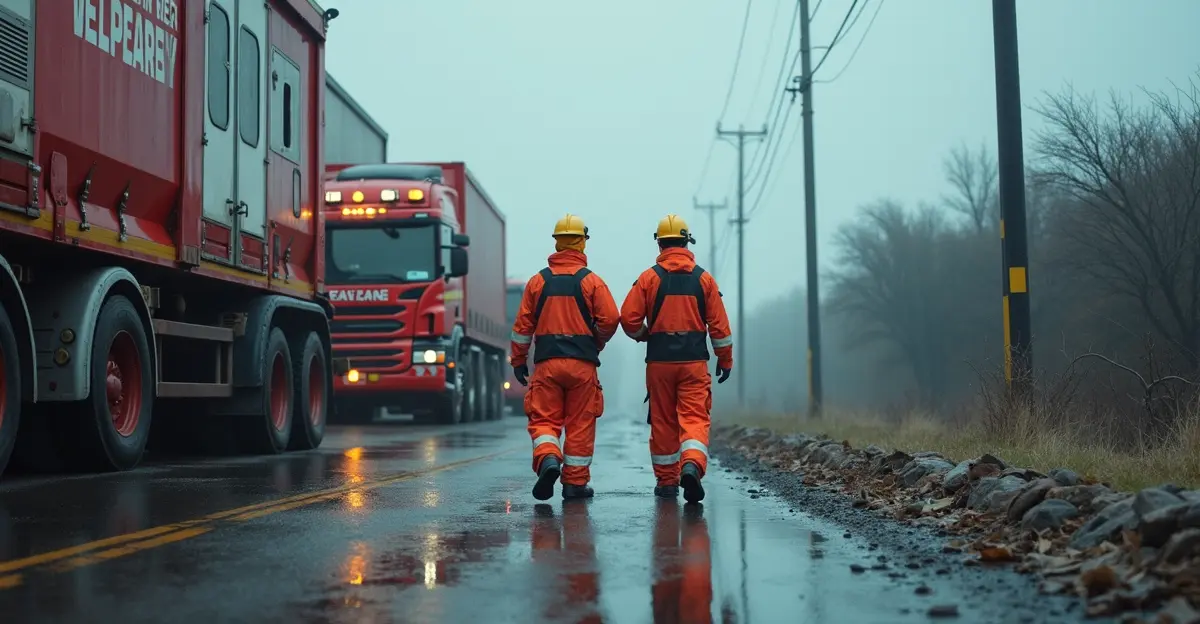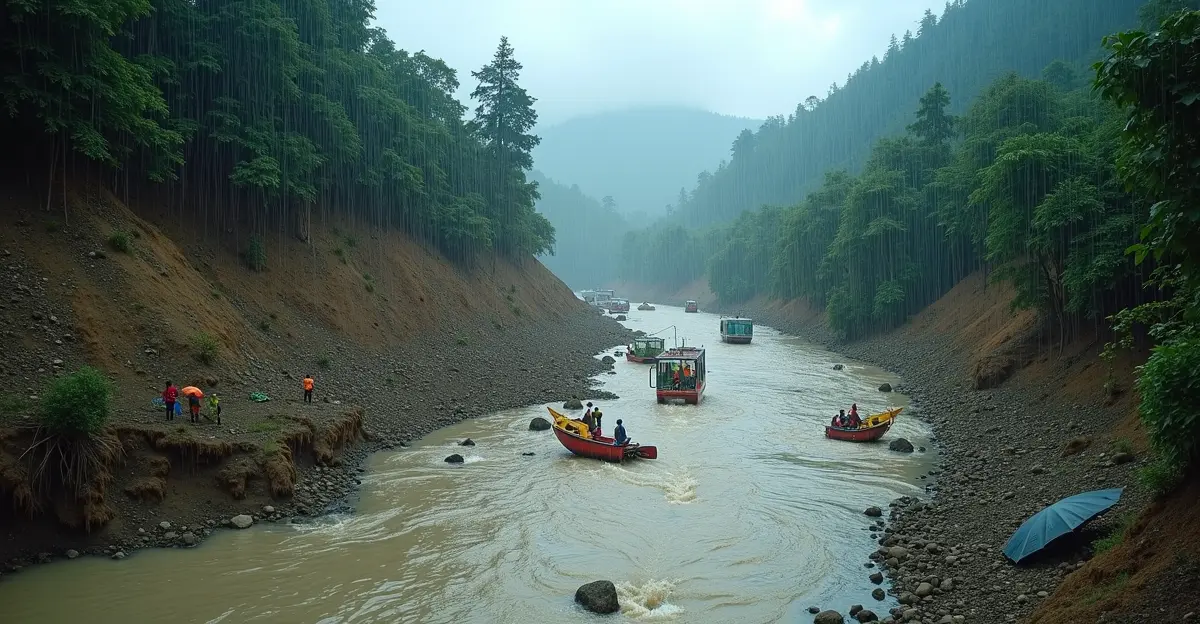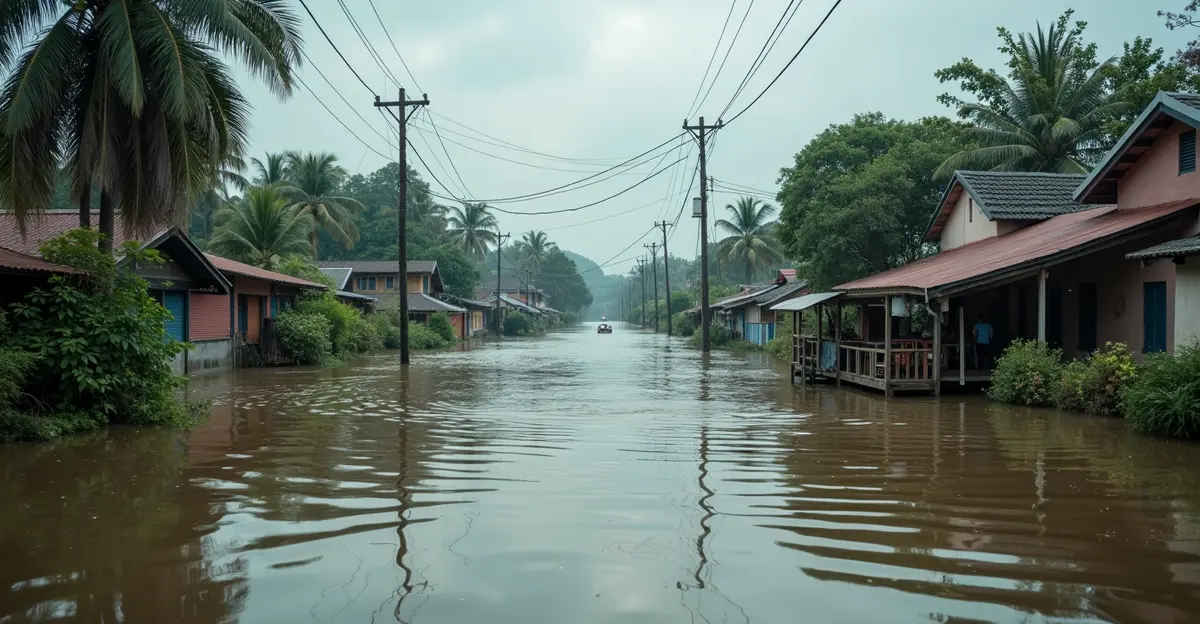Emergency response teams coordinate massive rescue, shelter, and supply chain recovery operations following a devastating coastal storm. Multi-agency efforts focus on life safety, shelter management, and restoring critical infrastructure amid challenging conditions.

Emergency Response Teams Mobilize After Major Coastal Storm
Emergency response teams across multiple agencies are coordinating massive rescue, sheltering, and supply chain recovery operations following a devastating coastal storm that struck coastal communities this week. The multi-agency response involves federal, state, and local partners working around the clock to address immediate life-safety needs while planning for long-term recovery.
Rescue Operations in Full Swing
Search and rescue teams have been deployed to affected areas, conducting house-to-house searches and water rescues in flooded neighborhoods. 'Our priority is getting people to safety and ensuring no one is left behind in dangerous conditions,' said FEMA Regional Coordinator Mark Thompson. 'We've activated all available resources, including Coast Guard assets for water rescues and National Guard units for ground operations.'
The storm surge, reaching up to 13 feet in some areas, has created challenging conditions for rescue personnel. Emergency managers are using data from the USGS Coastal Storm Team to identify the most critically affected zones and prioritize response efforts.
Emergency Shelter Network Activated
More than 50 emergency shelters have been established across the affected region, providing temporary housing for thousands of displaced residents. The shelter system includes both pre-designated facilities and newly established locations in schools, community centers, and other public buildings.
'We're seeing significant demand for shelter services, particularly from vulnerable populations including elderly residents and families with young children,' reported Red Cross Shelter Manager Sarah Johnson. 'Our teams are working to ensure all shelters have adequate food, water, and medical supplies.'
The shelter operations follow guidelines from the FEMA Planning Guides, which provide comprehensive frameworks for emergency shelter management and coordination.
Supply Chain Recovery Challenges
Restoring critical supply chains has emerged as a major challenge in the storm's aftermath. Damaged infrastructure, including roads, bridges, and ports, has disrupted the flow of essential goods and services to affected communities.
'We're facing significant logistical challenges in getting supplies where they're needed most,' explained Emergency Management Director Maria Rodriguez. 'Our teams are working to establish alternative transportation routes and coordinate with private sector partners to restore distribution networks.'
The recovery efforts draw on research from organizations like INFORMS, which studies supply chain resilience strategies for hurricane disruptions and other natural disasters.
Multi-Agency Coordination
The response operation involves unprecedented coordination between multiple agencies, including FEMA, state emergency management offices, local first responders, and non-governmental organizations. Daily coordination meetings ensure resources are allocated efficiently and information is shared across all responding entities.
'This level of interagency cooperation is essential for effective disaster response,' noted National Emergency Management Association representative David Chen. 'We've learned from past storms that seamless coordination saves lives and speeds recovery.'
The coordination model reflects best practices from international disaster management agencies like Turkey's AFAD, which emphasizes integrated response systems across governmental and non-governmental partners.
Worker Safety and Health Considerations
Emergency responders and recovery workers face numerous hazards, from floodwaters and debris to structural instability and environmental contaminants. Safety protocols from the CDC/NIOSH emergency response guidance are being implemented to protect personnel during cleanup and recovery operations.
'Worker safety is our top concern during these challenging operations,' emphasized Occupational Safety Specialist Dr. Lisa Park. 'We're ensuring all personnel have proper protective equipment and training for the specific hazards they may encounter.'
Looking Ahead: Recovery and Resilience
As immediate rescue operations continue, planning is already underway for the long-term recovery phase. This includes assessing damage, coordinating rebuilding efforts, and implementing measures to enhance community resilience against future storms.
'The work doesn't stop when the waters recede,' said Community Recovery Coordinator James Wilson. 'We're committed to helping these communities rebuild stronger and more resilient than before.'
The recovery approach incorporates lessons from organizations like the NOAA Recovery Support program, which focuses on natural resources, economic recovery, and community planning in coastal disaster scenarios.

 Nederlands
Nederlands
 English
English









